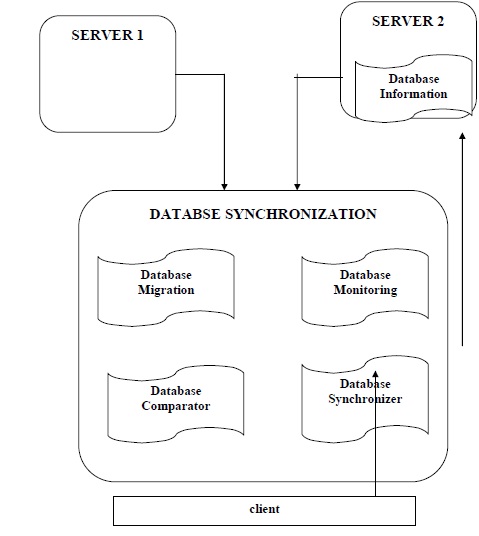





Published on Nov 30, 2023
Database Synchronization Project propose allows you to take one database, make an exact copy of it on another server, and set one of them (the slave) to take all its updates from the other (the master).
The slave reads the master's table and finds whether the data in the master has been changed and vise versa, and repeats these on its database, keeping the two in exact sync. Database Synchronizer -it is the unique program tool allowing to work with heterogeneous databases both at a simple user level, and at professional DBA level or software developer level.
The product has been tested in work with many various database types:
• ORACLE
• MS SQL Server
• MySQL
• MS Access and many others
The proposed system is responsible for reducing the drawbacks and the cost in the existing system . the proposed system reduce the drawbacks by applying the synchronization concept between different database servers. The proposed system will synchronize the tables between different database servers. so the problem of applying synchronization in enterprise application is reduced. The proposed system reduce the cost of installation of oracle or Informix by installation of low cost database servers.
The system can be broadly divided into 2 modules:
1. Generating Database Schema
2. Constructing Database
3. Data Migration
4. Database Monitoring
5. Database Comparator
• A fully structured but still versatile automated data migration process
• Full control of source and target data definitions
• The highest quality target data with no data loss
• Consistent, accurate, and cost effective results
• Efficient utilization of available resources
• Support for partial or incremental migration
• Support for multiple run-time environments
• Ensures at a given time the source and destination database will be in sync(same)
• Efficient way for comparing two database for integration
Database Synchronizer supports the exchange of data pertaining to resources shared between multiple production units and between multiple projects. It presents issues related to the generation and management of this data exchange
The minimum hardware required for the development of the project is:
Processor : Any Processor above 500 Mhz.
Ram : 128Mb.
Hard Disk : 10 Gb.
Compact Disk : 650 Mb.
Floppy Disk : 1.44 Mb.
Input device : Standard Keyboard and Mouse.
Output device : VGA and High Resolution Monitor.
Operating System : Windows 2000 server Family.
Pages developed using : Java Server Pages and HTML.
Tools : J Boss IDE, J Creator 1.5
Scripts : JavaScript
Techniques : Apache Tomcat Web Server, J2SDK 1.4
Web Browser : Microsoft Internet Explorer.
Data Bases : Microsoft Access, Oracle 8.0, SQL Server
The primary area currently evolving is in the formatting of documents. The debate is raging over how much control of the appearance of the document should rest in the hands of the user and how much should be decided by the publisher. Years of research have gone into graphic design and typography, and there are varied methods of using the appearance of text and graphics to communicate a particular message. To designers and publishers who have become experts in this art, it is important that the information contributor have a large degree of control over document appearance.
However, on the World Wide Web, the user can choose fonts, window sizes, colors, and many other presentation variables. Although this is a frustration to many publishers, it is an important part of the Web. Not all users have the same typefaces, colors, and screen area available, and must be able to make the WWW page fit their constraints. In addition, physical differences in users place special needs on the appearance of pages; for example, sight-impaired people might want to use very large type; a blind user does not see anything at all and has the document read aloud by the computer.

This database server is the master server, which contains the original database with its tables and values. The contents of the database are migrated to the slave database and any changes made to the Master server is captured and sent to the slave for the database to be synchronized. Database Server II (Slave): This database server is the slave. It acts as a back up for the master database server. The changes made in the master are captured and sent to this server, it compares the XML file which contains the changes and then applies them to them to its database. Client: The application revolves around this major entity. The client requests the data from the database. But, he may not be aware of the location of the database i.e., whether the data is provided from the master server or from the slave server as both the servers are synchronized and contains the same data at any time.
The project entitled “Database Synchronization” was successfully completed within the time span allotted. With implementation an application capable of scheduling projects to subordinates. All the modules are tested separately and put together to form the main system. Finally the system is tested with real data and everything worked successfully. thus the system has fulfilled the entire objective identified. The entire system is user friendly and interactive. the performance of the system is provided efficiently. The system tested with all possible sample data and was found to have an effective planning of the functions or process with a high degree of accuracy and user friendliness.